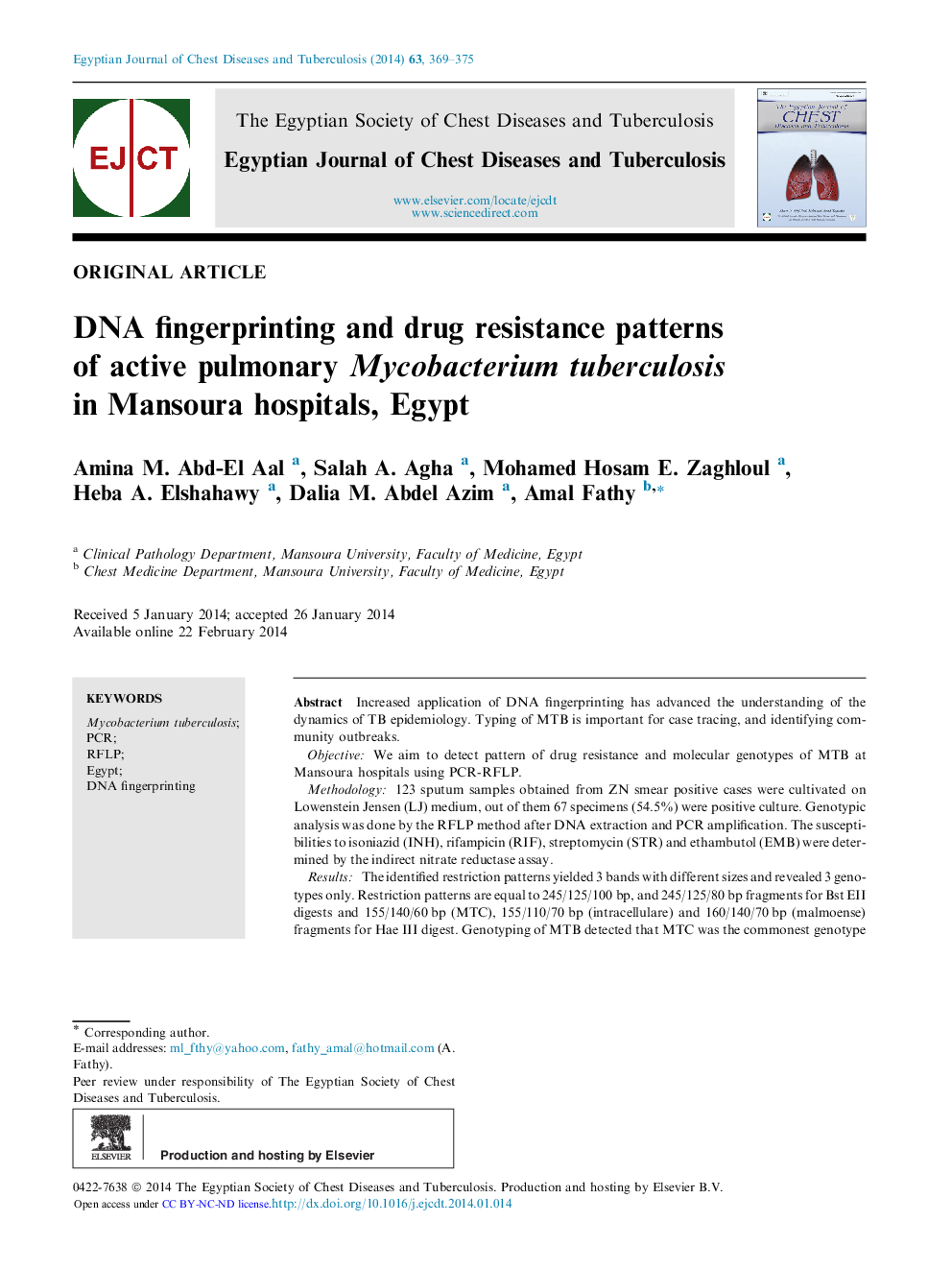| Article ID | Journal | Published Year | Pages | File Type |
|---|---|---|---|---|
| 3400348 | Egyptian Journal of Chest Diseases and Tuberculosis | 2014 | 7 Pages |
Increased application of DNA fingerprinting has advanced the understanding of the dynamics of TB epidemiology. Typing of MTB is important for case tracing, and identifying community outbreaks.ObjectiveWe aim to detect pattern of drug resistance and molecular genotypes of MTB at Mansoura hospitals using PCR-RFLP.Methodology123 sputum samples obtained from ZN smear positive cases were cultivated on Lowenstein Jensen (LJ) medium, out of them 67 specimens (54.5%) were positive culture. Genotypic analysis was done by the RFLP method after DNA extraction and PCR amplification. The susceptibilities to isoniazid (INH), rifampicin (RIF), streptomycin (STR) and ethambutol (EMB) were determined by the indirect nitrate reductase assay.ResultsThe identified restriction patterns yielded 3 bands with different sizes and revealed 3 genotypes only. Restriction patterns are equal to 245/125/100 bp, and 245/125/80 bp fragments for Bst EII digests and 155/140/60 bp (MTC), 155/110/70 bp (intracellulare) and 160/140/70 bp (malmoense) fragments for Hae III digest. Genotyping of MTB detected that MTC was the commonest genotype among studied cases 49/67 (73.1%), followed by Mycobacterium intracellulare 14/67 (20.9%), while Mycobacterium malmoense had the least incidence 4/67. There was significant increased risk of resistance to STM, RIF, ETH and INH with M. intracellulare (p = 0.021, p < 0.001, p = 0.001, p < 0.001) while MTC showed lower resistance to STM, RIF, ETH and INH and all M. malmoense isolates showed no resistance.ConclusionPCR-RFLP was found to be a simple and reproducible method for genotyping of MTB strains and for early detection of Mycobacterium tuberculosis infection.
